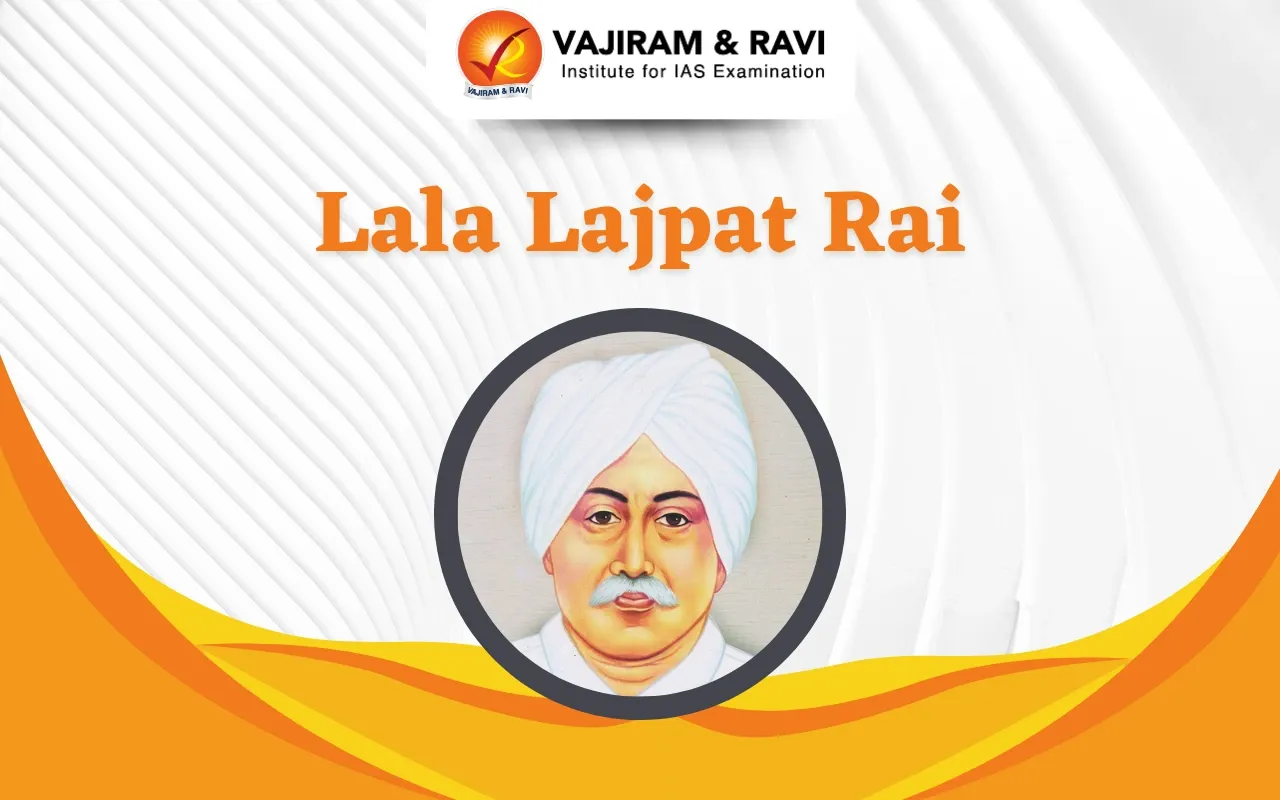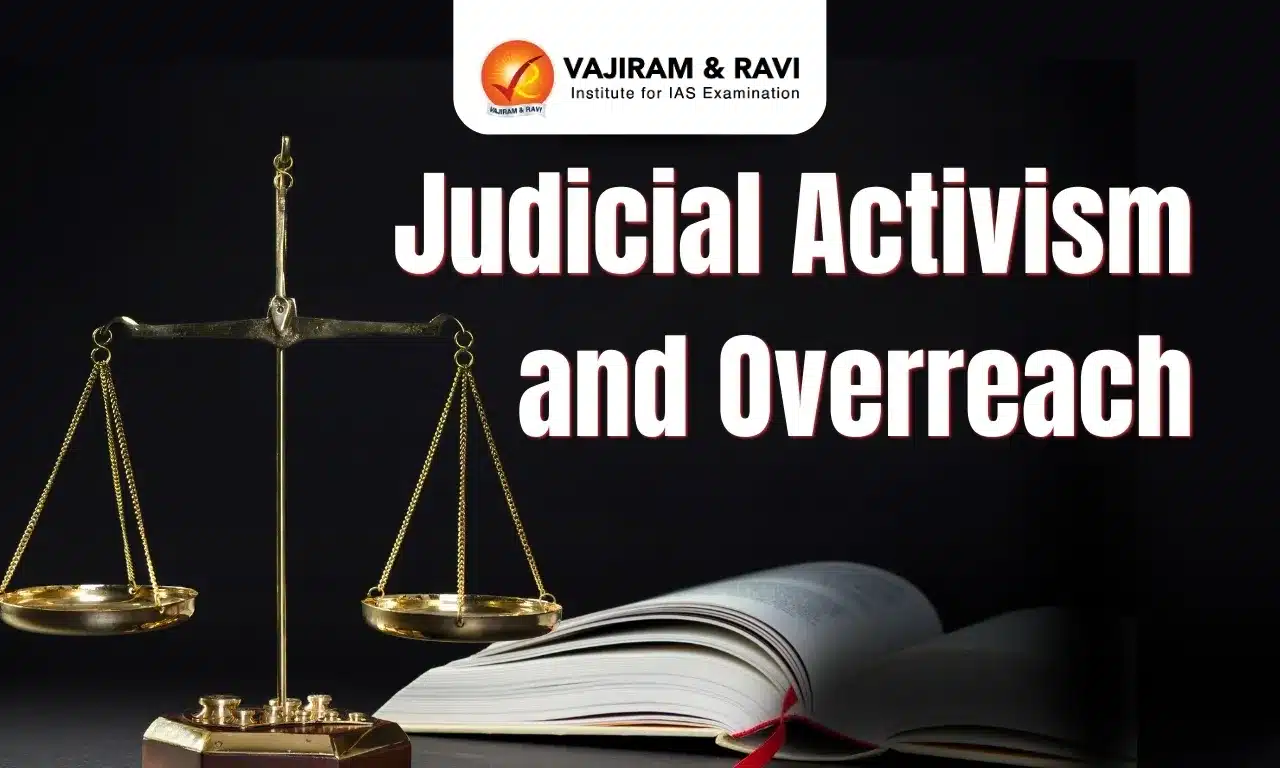Lala Lajpat Rai, also known as Punjab Kesari (Lion of Punjab), was a prominent nationalist leader, freedom fighter, and social reformer. Rai played a crucial role in India's independence movement, particularly through his leadership in the extremist wing of the Indian National Congress (INC) alongside Bal Gangadhar Tilak and Bipin Chandra Pal, forming the famous Lal-Bal-Pal trio.
A staunch advocate of Swaraj, Rai also led protests against the Simon Commission in 1928, where he sustained fatal injuries. In addition to his political career, he was a social reformer who championed education and fought against caste discrimination. His writings and journalistic endeavours further galvanized public opinion against British rule.
Lala Lajpat Rai Biography
Lala Lajpat Rai was born on 28 January 1865 in Dhudike village, Punjab. Rai attended Government College, Lahore, where he studied law. His exposure to the Arya Samaj during his education influenced his outlook on social and political issues, inspiring him to work towards the upliftment of Indian society.
Lala Lajpat Rai Political Career
Lala Lajpat Rai’s political journey was deeply intertwined with India's growing nationalist movement in the late 19th and early 20th centuries. In 1914, Lala Lajpat Rai gave up his law practice to fully commit himself to the cause of India’s independence. In October 1917, he founded the Indian Home Rule League of America in New York, which aimed to spread awareness about India's fight for self-rule. Later he was also elected deputy leader of the Central Legislative Assembly in 1926.
Lala Lajpat Rai Association with INC
Lala Lajpat Rai’s association with the Indian National Congress was a significant aspect of his political career. He aligned with the extremist faction of the Congress led by Bal Gangadhar Tilak and Bipin Chandra Pal, advocating for more direct action and self-rule. The trio, popularly known as Lal-Bal-Pal, pushed for Swaraj, Swadeshi, and Boycott of British goods during the Swadeshi Movement.
- In 1920, Rai was elected as the President of the INC at the special session in Calcutta.
- His presidency marked a period of transition for the INC, as the party was preparing for the Non-Cooperation Movement.
Lala Lajpat Rai Freedom Movement
Lala Lajpat Rai was an ardent supporter of the Swadeshi Movement, which aimed at promoting Indian goods and boycotting British products. He actively participated in protests against the 1905 Partition of Bengal, which was seen as an attempt by the British to divide and weaken the nationalist movement. Rai’s leadership during this period helped mobilize the masses in Punjab, strengthening the anti-colonial resistance.
- During the Home Rule agitation, Rai advocated for greater autonomy for Indians within the British Empire.
- However, unlike some radicals, he supported cooperation with the British government where necessary. He encouraged Indians to hold government offices if it could benefit the national cause.
- At first, Lala Lajpat Rai opposed Gandhi’s idea of non-cooperation. However, he eventually came around to support the movement. Indeed, he voiced opposition to its withdrawal in 1922, following the Chauri-Chaura incident.
Lala Lajpat Rai Simon Commission Protest
One of the defining moments of Rai's political life came in 1928 when the British government sent the Simon Commission, which had no Indian representatives. Lala Lajpat Rai led the protests against the Commission, famously raising the slogan "Simon Go Back." On October 30, 1928, during a protest in Lahore, Rai was severely injured after being struck by police batons during a lathi charge. He later succumbed to his injuries on November 17, 1928.
Lala Lajpat Rai Social Reforms
In addition to his political activism, Rai was deeply committed to social reforms. He was an ardent supporter of education and the upliftment of the underprivileged sections of society. He helped Mahatma Hansraj in the establishment of the Dayanand Anglo-Vedic (DAV) College in Lahore, aimed at providing modern education rooted in Indian values.
- Lala Lajpat Rai worked to eliminate caste discrimination, promote women's rights, and fight for the upliftment of the poor and marginalized.
- He was a strong proponent of Vedic teachings and believed that the sacred Vedas should be accessible to all, regardless of caste or social status.
- Rai argued that everyone should have the right to read, recite, and learn from the Vedas, as knowledge was essential for societal reform and upliftment.
Lala Lajpat Rai Literary Works
Lala Lajpat Rai was a prolific writer and journalist. He founded and edited several newspapers, including Vande Mataram, and Arya Gazette, which became platforms for disseminating nationalist ideas. Rai also authored several books, including Young India, England’s Debt to India, The Story of My Deportation, and Unhappy India, and a series of popular biographies on Mazzini, Garibaldi, and Swami Dayanand. His literary contributions were vital in shaping public opinion against colonial rule.
Lala Lajpat Rai UPSC PYQs
Q) He wrote biographies of Mazzini, Garibaldi, Shivaji, and Shrikrishna; stayed in America for some time; and was also elected to the Central Assembly. He was (UPSC Prelims 2018)
(a) Aurobindo Ghosh (b) Bipin Chandra Pal
(c) Lala Lajpat Rai (d) Motilal Nehru
Ans: (c)
| Other Related Posts | |
| Extremist Phase of Indian National Congress | Bal Gangadhar Tilak |
| Chapekar Brothers | Aurobindo Ghosh |
| Bipin Chandra Pal | Alipore Conspiracy Case |
| Lala Lajpat Rai | Surat Split |
Last updated on November, 2025
→ Check out the latest UPSC Syllabus 2026 here.
→ Join Vajiram & Ravi’s Interview Guidance Programme for expert help to crack your final UPSC stage.
→ UPSC Mains Result 2025 is now out.
→ UPSC Notification 2026 is scheduled to be released on January 14, 2026.
→ UPSC Calendar 2026 is released on 15th May, 2025.
→ The UPSC Vacancy 2025 were released 1129, out of which 979 were for UPSC CSE and remaining 150 are for UPSC IFoS.
→ UPSC Prelims 2026 will be conducted on 24th May, 2026 & UPSC Mains 2026 will be conducted on 21st August 2026.
→ The UPSC Selection Process is of 3 stages-Prelims, Mains and Interview.
→ UPSC Result 2024 is released with latest UPSC Marksheet 2024. Check Now!
→ UPSC Prelims Result 2025 is out now for the CSE held on 25 May 2025.
→ UPSC Toppers List 2024 is released now. Shakti Dubey is UPSC AIR 1 2024 Topper.
→ UPSC Prelims Question Paper 2025 and Unofficial Prelims Answer Key 2025 are available now.
→ UPSC Mains Question Paper 2025 is out for Essay, GS 1, 2, 3 & GS 4.
→ UPSC Mains Indian Language Question Paper 2025 is now out.
→ UPSC Mains Optional Question Paper 2025 is now out.
→ Also check Best IAS Coaching in Delhi
Lala Lajpat Rai FAQs
Q1. What is Lala Lajpat Rai famous for?+
Q2. Which newspaper was started by Lala Lajpat Rai?+
Q3. Who is called the lion of Punjab?+
Q4. Who founded Vande Mataram?+
Q5. How did Lala Lajpat Rai lose his life?+
Tags: lala lajpat rai quest

















